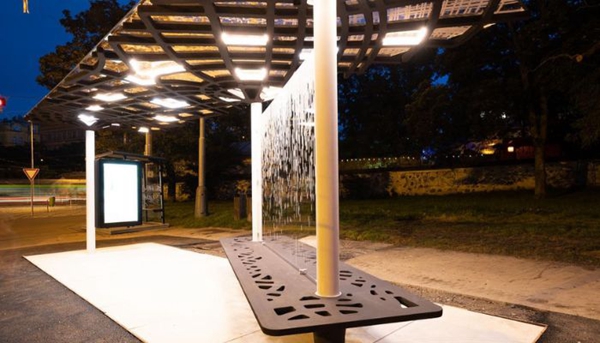Prague, the capital of the Czech Republic, is a city with 142 kilometers of infrastructure, with about 991 vehicles on the road every day, transporting residents and tourists. Accordingly, Prague's transport company, which operates the trams and metro and keeps them up-to-date, is responsible for all stations and stops.
On September 16, 2022, a 3D printed bench was produced in just 36 hours at a station called Stromovka, located in Prague's 7th district, and was unveiled last weekend. Excitingly, this tram shelter is the first tram shelter in the Czech Republic to be produced using additive manufacturing technology.

The innovative bus shelter was produced and built by Prague-based So Concrete, which provides benches and shelters free of charge to the city of Prague. The prototype, which will now provide passersby with a place to sit while waiting for the next tram, is made of concrete with special properties: it is ten times stronger than conventional concrete, hence the name super-strong concrete. Adam Scheinherr, the Prague politician in charge of transportation, is exceptionally excited about the benefits that 3D printing will bring to Prague, explaining, "Combining this concrete with 3D printing is a way to use concrete only where it is absolutely necessary. It's a change in approach to the project that sets a course for meeting the conditions of sustainability. Don't waste energy and resources, which are becoming scarce."

△ Passersby can sit under the lid of the additively manufactured tram stop
Details about the 3D printed tram station in Prague By using this 3D printed manufacturing method, the city of Prague can enjoy a new and sustainable way of building. In addition, the building can achieve higher efficiency in terms of economy. In this case, only 60% of the materials were used, while in terms of human labor, it was possible to reduce it to a minimum. After the 3D printing was completed, So Concrete was responsible for transporting the individual parts printed in concrete and subsequently assembling them, which now represents a completely new kind of tram station. However, 3D printing was not used for all of the construction. Instead, the entire design was optimized with the help of artificial intelligence, and only at the end were modifications made using human power.
Regarding the maintenance of the new tram shelters, So Concrete says that the roof does not require any maintenance because the material used is very durable. Federico Diaz, managing director of So Concrete, further describes the specifics of the material and its application, which he estimates will last 100 years or more. The material's longevity is such that it has been used in dam construction, for example. Since the bus shelter has already welcomed many guests, the city is sure that this will not be the last building to use 3D printing technology. In addition, they are already planning other projects, such as the construction of the Štvanická pedestrian bridge and the reconstruction of the Barrandov and Lebeň bridges.

The △ tram shelters were made by 3D printing and artificial intelligence design





